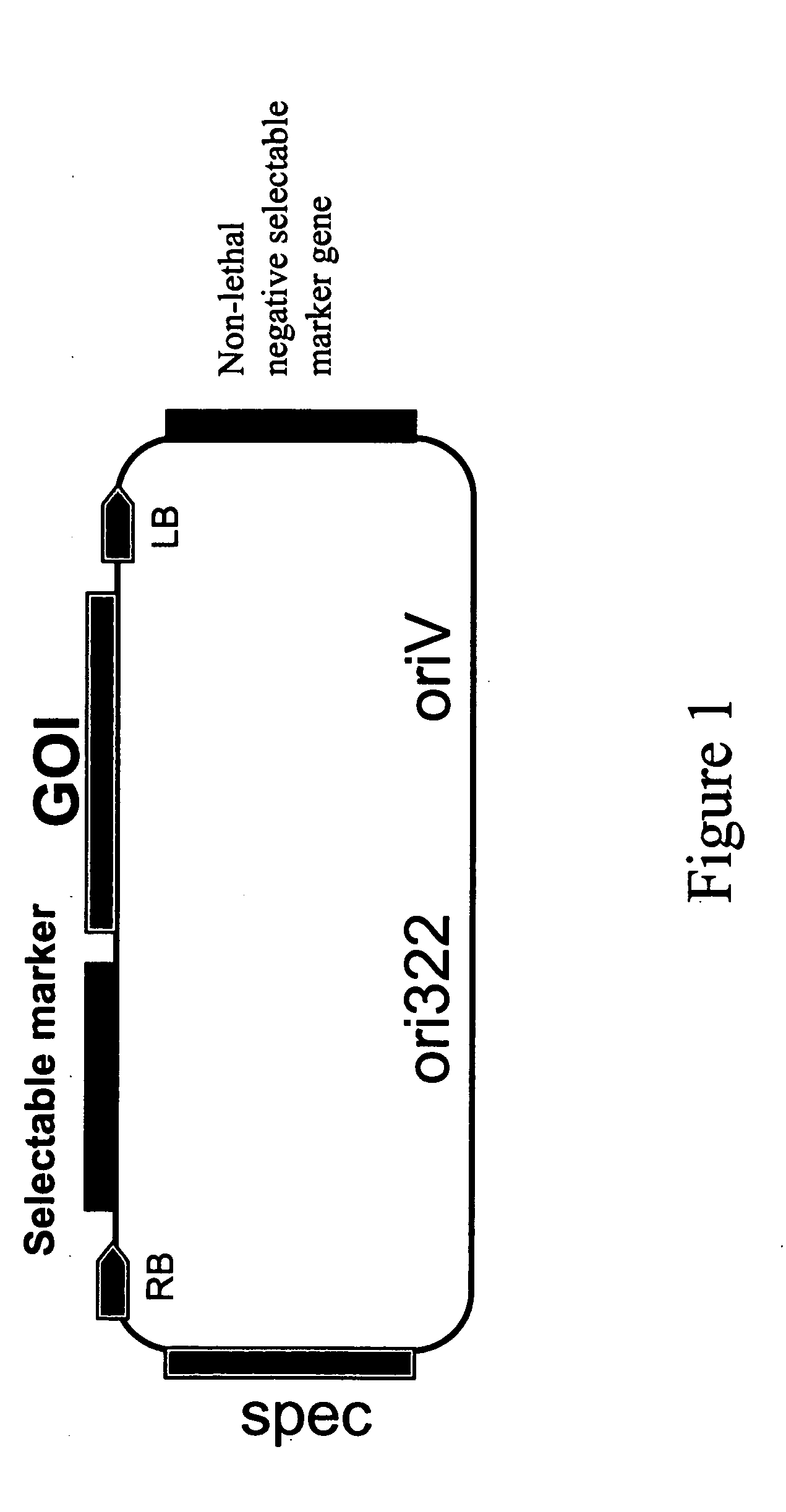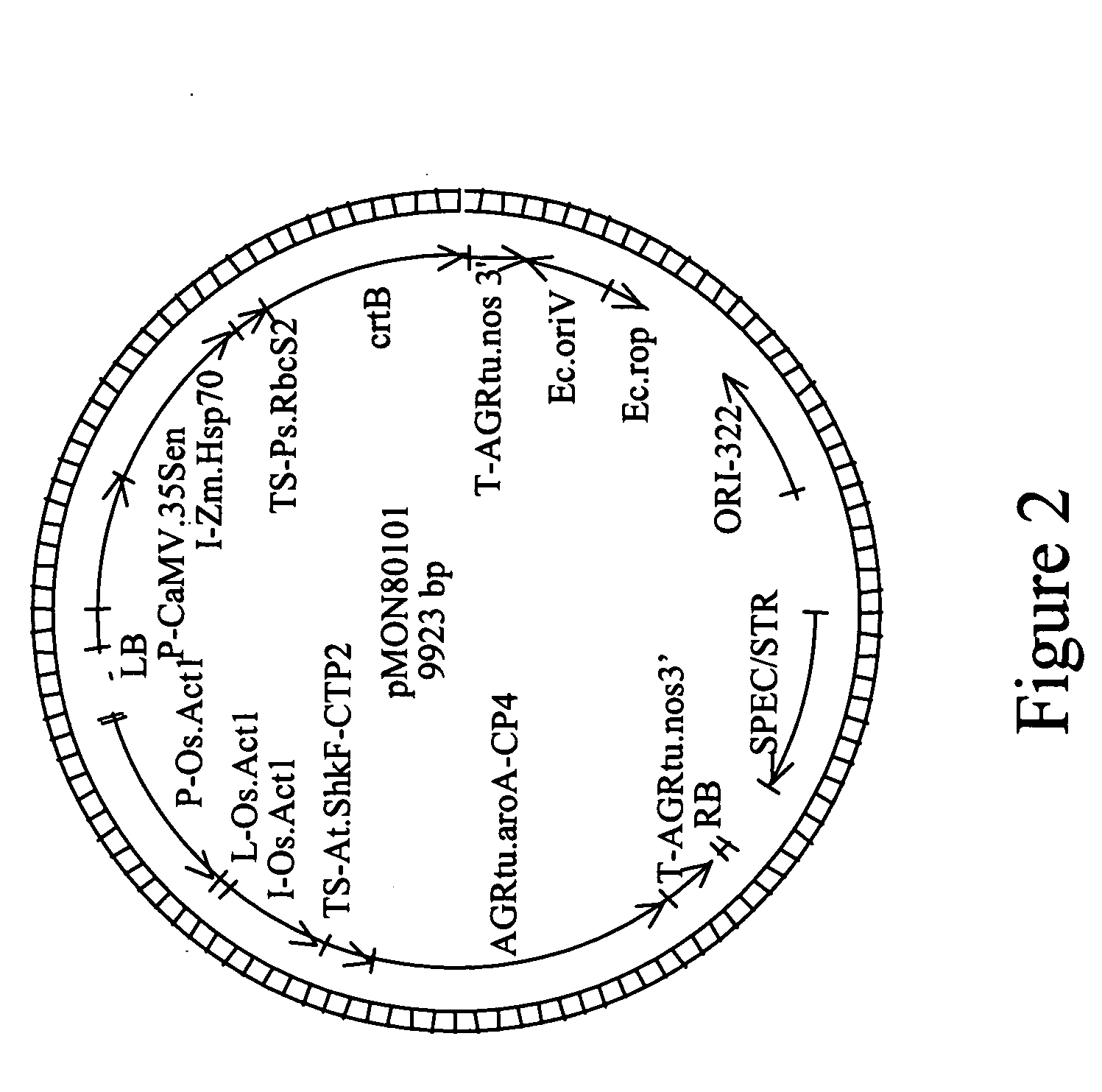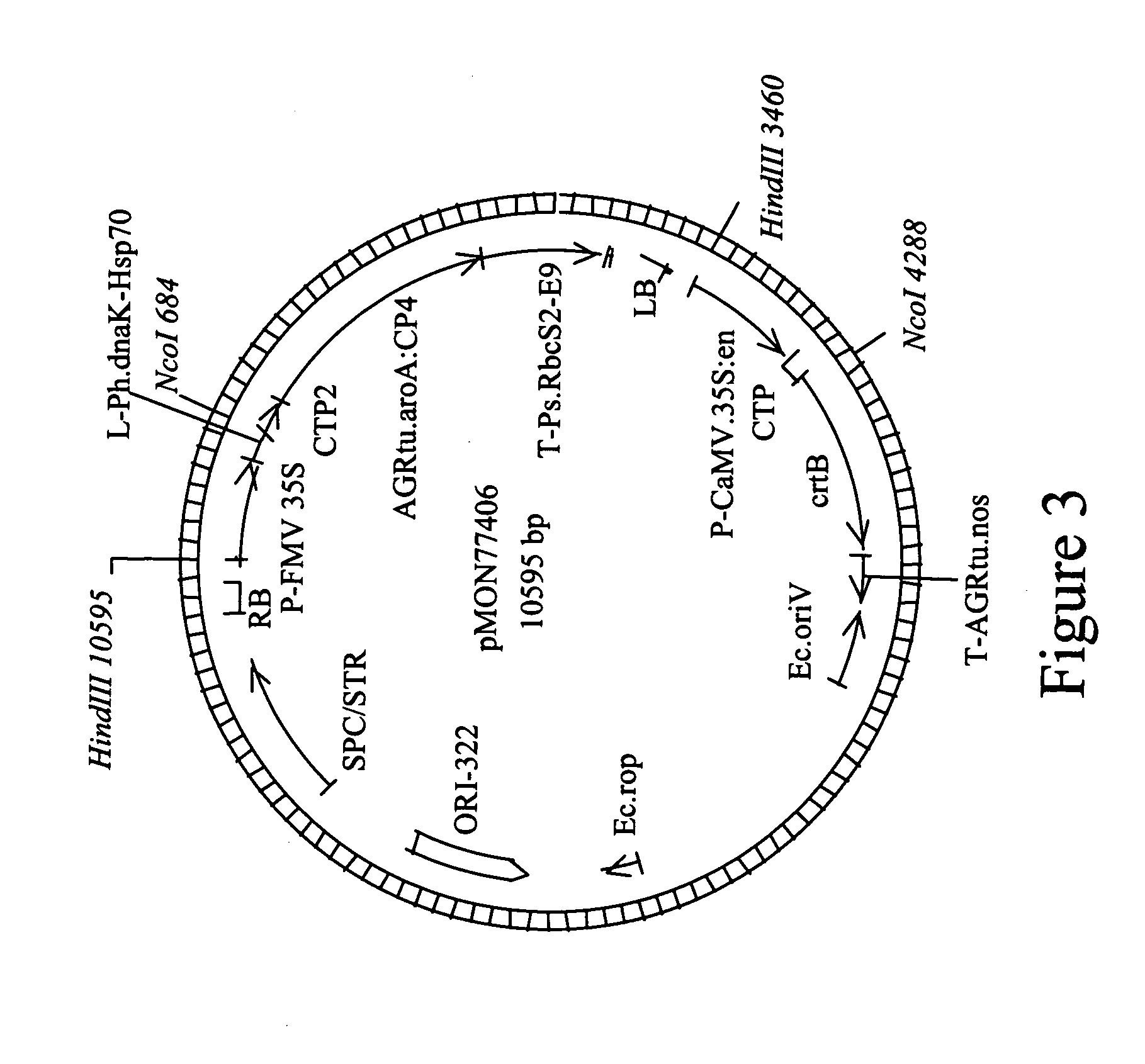DNA constructs and methods to enhance the production of commercially viable transgenic plants
a technology of dna constructs and plants, applied in the field of dna constructs and methods to enhance the production of commercially viable transgenic plants, can solve the problems of inability to commercialize transgenic plants that contain the vector backbone dna, inability to regenerate and waste of substantial efforts regenerating plants from plant cell culture that have no commercial potential. , to achieve the effect of reducing the amount of end
- Summary
- Abstract
- Description
- Claims
- Application Information
AI Technical Summary
Benefits of technology
Problems solved by technology
Method used
Image
Examples
example 1
[0088] DNA Plasmids
[0089] The DNA plasmids of the present invention are DNA constructs that contain a T-DNA segment and a vector backbone segment. The T-DNA is flanked by Agrobacterium Ti plasmid border regions [the right border (RB) and left border (LB) regions] and contains positive selectable marker genes and agronomic genes of interest (GOI). The vector backbone segment contains the non-lethal negative selectable marker gene and the plasmid maintenance elements. DNA plasmids used as controls for comparative purposes contain identical or similar T-DNA expression cassettes, but do not contain the non-lethal negative selectable marker gene in the vector backbone. The basic design of a plasmid of the present invention is illustrated in FIG. 1. In this illustration, the RB and LB elements flank a T-DNA, these border elements may be substituted with other like elements or fragments of related DNA molecules that function as nick sites for an endonucleases provided by the virulence gene...
example 2
[0109] Crop Transformation
[0110] The DNA constructs described in the present invention (e.g., pMON42066, pMON75181, pMON75182 and pMON75183) are transformed into a disarmed Agrobacterium strain. The DNA construct is transferred into Agrobacterium, for example, by a triparental mating method (Ditta et al., Proc. Natl. Acad. Sci. 77:7347-7351, 1980), or by electroporation. Liquid cultures of Agrobacterium are initiated from glycerol stocks or from a freshly streaked plate and grown overnight at 26.degree. C.-28.degree. C. with shaking (approximately 150 rpm) to mid-log growth phase in liquid LB medium, pH 7.0 containing the appropriate antibiotics. The Agrobacterium cells are resuspended in the inoculation medium and the density is adjusted to OD.sub.660 of about 1.
[0111] Transformation of corn cells and regeneration of the cells into intact fertile plants by Agrobacterium mediated transformation can be conducted using various methods known in the art. For example, surface sterilized ...
example 3
[0116] Molecular Analysis for Backbone DNA and Copy Number
[0117] DNA is extracted from tissue samples removed from plants transformed with the DNA plasmids of the present invention and regenerated from plant cell tissue culture. A PCR based method is used to assay the DNA for the presence of the Ec.oriV DNA segment, an indicator of vector backbone. This DNA is adjacent to the LB and its presence in the DNA extracted from the regenerated plants indicates that transfer of vector sequences beyond the LB has occurred. DNA can be isolated from plant tissues by any number of methods for example, the CTAB procedure (Rogers et al., Plant Mol. Biol. 5:69-76, 1985) or DNAeasy.TM. 96 Plant Kit (Cat. # 69181, Qiagen Inc., Valencia, Calif.) following the manufacturers instructions. Taqman.RTM. (PE Applied Biosystems, Foster City, Calif.) is described as a method of detecting and quantifying the presence of a DNA sequence and is fully understood in the instructions provided by the manufacturer. D...
PUM
| Property | Measurement | Unit |
|---|---|---|
| Interference | aaaaa | aaaaa |
| Electrical resistance | aaaaa | aaaaa |
Abstract
Description
Claims
Application Information
 Login to View More
Login to View More - R&D
- Intellectual Property
- Life Sciences
- Materials
- Tech Scout
- Unparalleled Data Quality
- Higher Quality Content
- 60% Fewer Hallucinations
Browse by: Latest US Patents, China's latest patents, Technical Efficacy Thesaurus, Application Domain, Technology Topic, Popular Technical Reports.
© 2025 PatSnap. All rights reserved.Legal|Privacy policy|Modern Slavery Act Transparency Statement|Sitemap|About US| Contact US: help@patsnap.com



